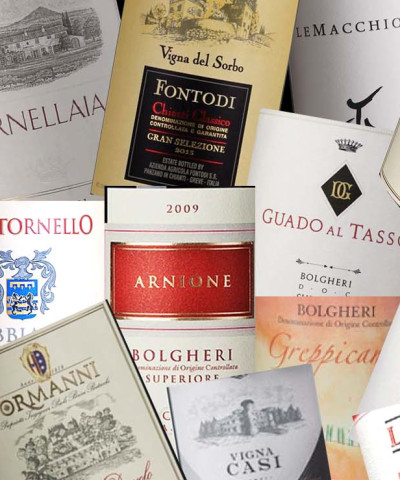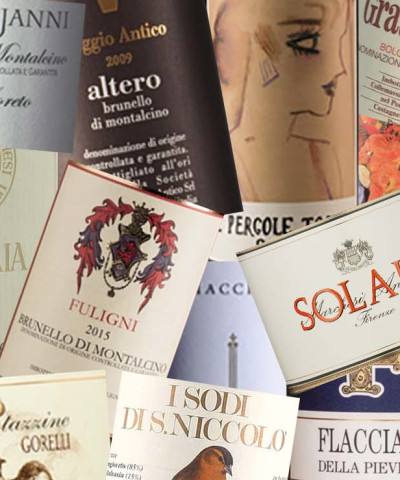Four Decameron novels
Florence and Tuscany told in the days of the Black Plague through its characters and their stories, to know the men and their habits...
In the days of the Coronavirus, references to ancient epidemics cannot be missing, especially if they were so important that they closed one era and opened another, as happened with the one that overwhelmed Italy in 1348. The Black Plague, as it is remembered, killed almost a third of the inhabitants of Europe and changed the face of this part of the world forever.
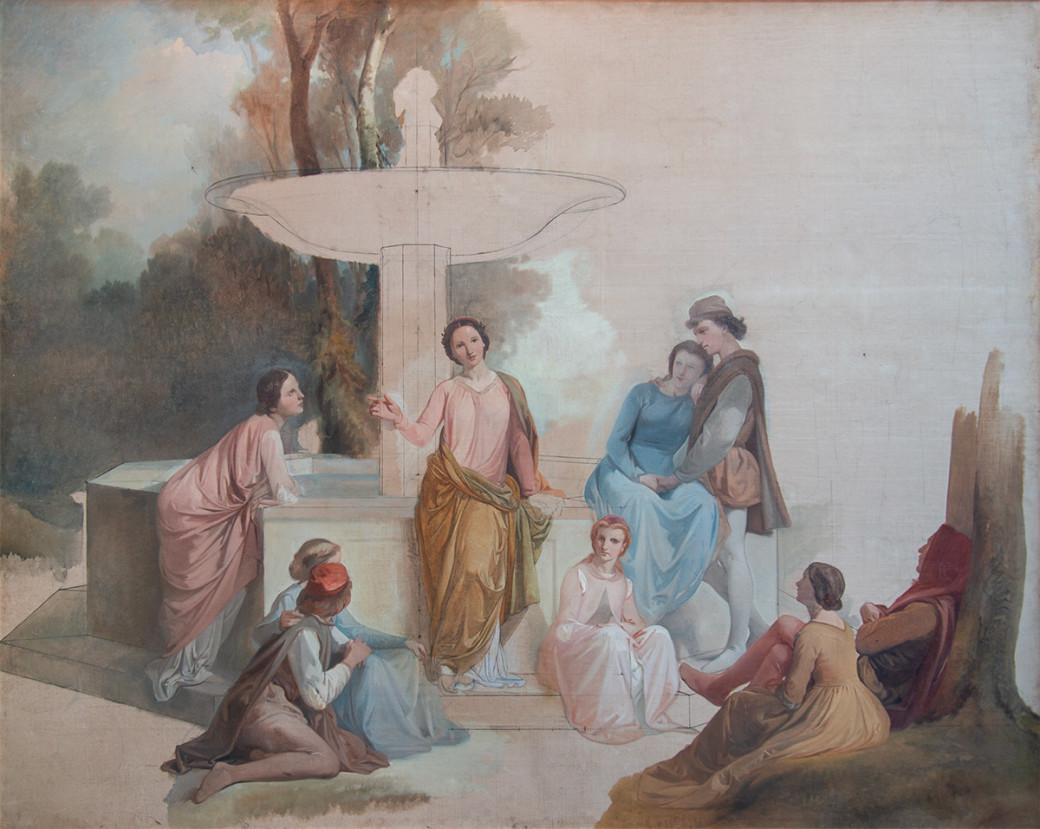 I novellatori del Decamerone, Enrico Pollastrini
I novellatori del Decamerone, Enrico PollastriniWhat tells how the plague devastated Florence is the "frame" of the hundred novels of Giovanni Boccaccio's Decameron, in which we read how ten young people - who met in Santa Maria Novella - to escape the disease took refuge in their possessions in the countryside for two weeks. There they tell stories, sing and listen to music, pray and dedicate themselves to body care, to be ready to return to their Florence.
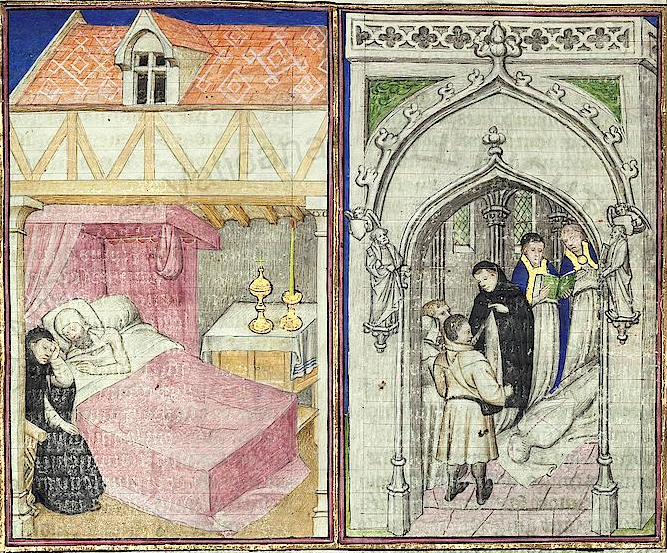 Vaticano, Biblioteca Apostolica Vaticana. Ms. Palat. lat. 1989, f. 11r. La vicenda di Ser Ciappelletto, in Decameron I, 1.
Vaticano, Biblioteca Apostolica Vaticana. Ms. Palat. lat. 1989, f. 11r. La vicenda di Ser Ciappelletto, in Decameron I, 1.Ser Ciappelletto is the first of a hundred novels and tells the story of a notary public in Prato who is dishonest and dissolute, who on his deathbed lies incomparably to the gentle monk who confesses him and manages to convince him that he has spent a life of holiness. He ends up being venerated as a saint and even performing miracles in the land of Burgundy.
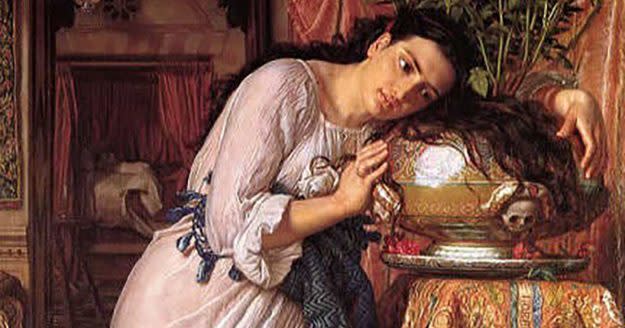 Lisabetta da Messina
Lisabetta da MessinaLisabetta da Messina, on the other hand, is the beautiful young sister of three merchants who have come from San Gimignano to work in Sicily with their father and who, when her sister falls in love with a young Pisan employee of theirs, kill him. The young man appears in a dream to his beloved who manages to recover his head and hide it in a vase in which he plants basil; when the brothers discover the whole thing they take the vase away from her and abandon her, leaving her to die in pain.
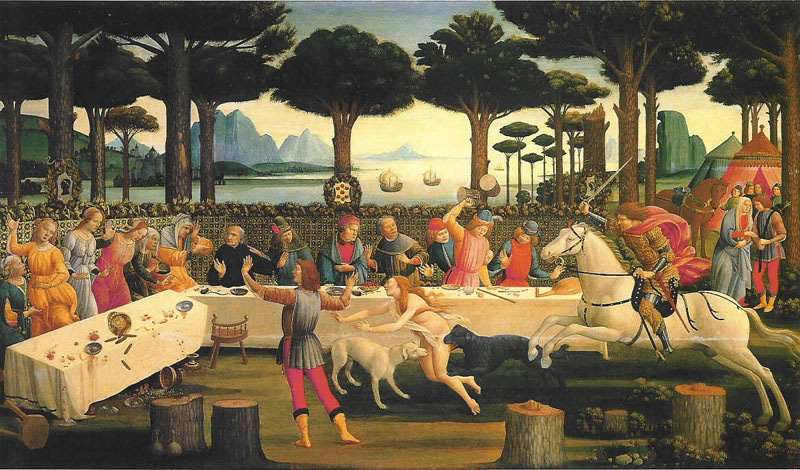 Botticelli, Decameron V 8
Botticelli, Decameron V 8Cisti baker is instead one of the most elegant characters of the Decameron, intelligent and aware of his own situation and the world around him - despite his luck as a simple artisan, with a single joke he manages to make one of the most powerful men in Florence reflect and be loved and esteemed by him and the Pope's ambassadors.
Calandrino is a character who, with Bruno and Buffalmacco, three painters, animates several novels dedicated to the mockery that he suffers from the two friends who manage to deceive him every time, as happens when they convince him that they have found the heliotropy that makes him invisible on the banks of the Mugnone and that instead he ends up being filled (as usual) with insults by his wife.










